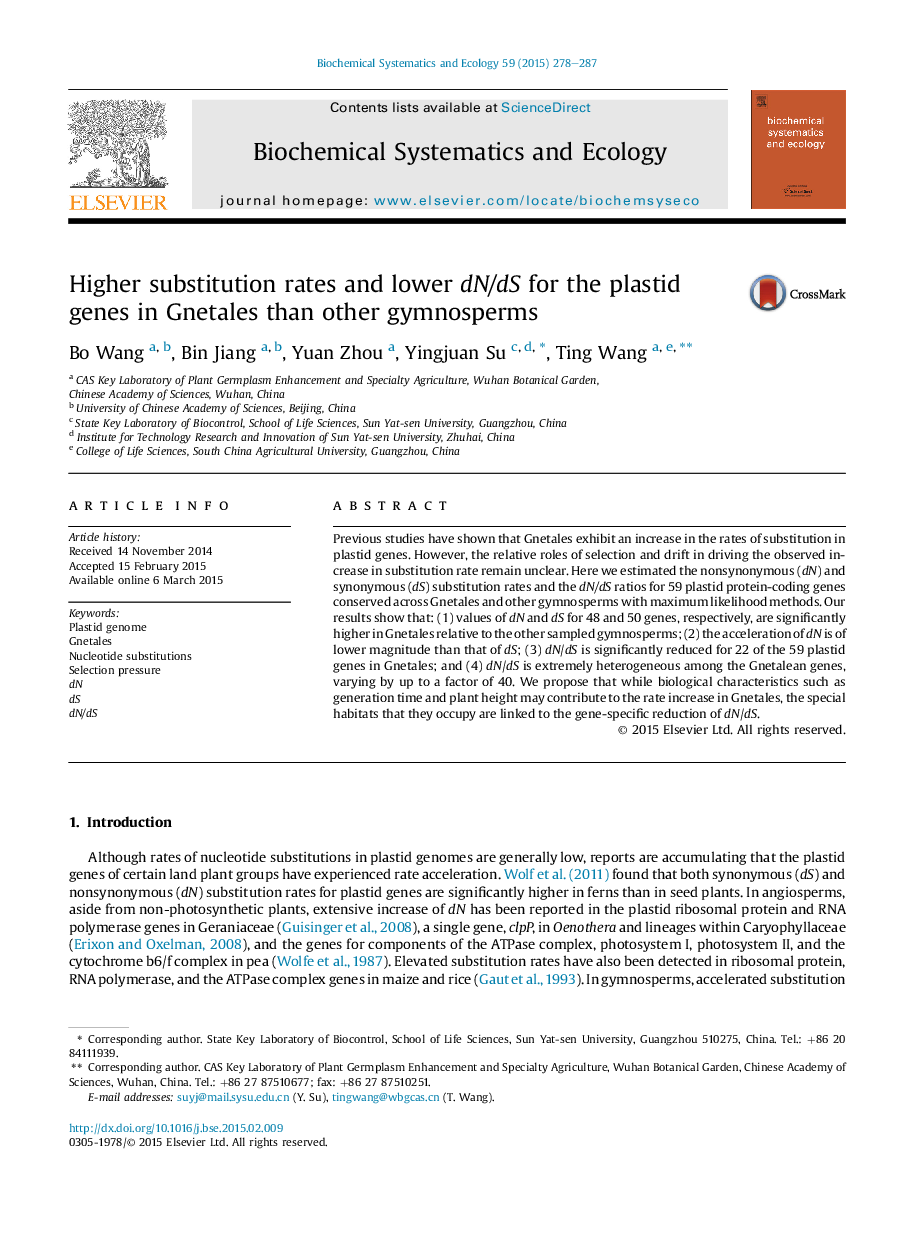| Article ID | Journal | Published Year | Pages | File Type |
|---|---|---|---|---|
| 1351371 | Biochemical Systematics and Ecology | 2015 | 10 Pages |
•DN and dS are significantly higher in Gnetales relative to other gymnosperms.•DN/dS is significantly reduced for 22 of the 59 plastid genes in Gnetales.•Generation time and plant height may contribute to the rate increase in Gnetales.•The special habitats are linked to the gene-specific reduction of dN/dS in Gnetales.
Previous studies have shown that Gnetales exhibit an increase in the rates of substitution in plastid genes. However, the relative roles of selection and drift in driving the observed increase in substitution rate remain unclear. Here we estimated the nonsynonymous (dN) and synonymous (dS) substitution rates and the dN/dS ratios for 59 plastid protein-coding genes conserved across Gnetales and other gymnosperms with maximum likelihood methods. Our results show that: (1) values of dN and dS for 48 and 50 genes, respectively, are significantly higher in Gnetales relative to the other sampled gymnosperms; (2) the acceleration of dN is of lower magnitude than that of dS; (3) dN/dS is significantly reduced for 22 of the 59 plastid genes in Gnetales; and (4) dN/dS is extremely heterogeneous among the Gnetalean genes, varying by up to a factor of 40. We propose that while biological characteristics such as generation time and plant height may contribute to the rate increase in Gnetales, the special habitats that they occupy are linked to the gene-specific reduction of dN/dS.
